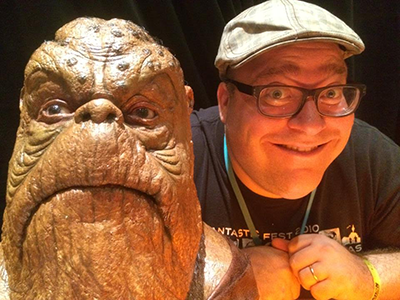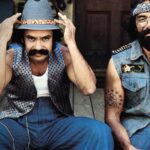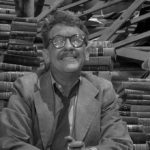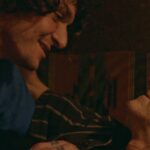
The Right Stuff is one of those few examples of the movie being better than the book. That’s because Tom Wolfe’s book has the specific distinction of being told from Tom Wolfe’s point-of-view. This makes for good reading, but you’ve always got that voice. Kaufman’s film has the best of both worlds. He can dip into some Wolfe schtick periodically (there are bits of dialogue lifted directly) but then he can go off and do his own thing. I first saw The Right Stuff when I was nine years old and I’ve never been the same. I’ve since read many books about the Space Race (the best for a introductory & full overview, I feel, is James Schefter’s “The Race: The Complete True Story of How America Beat Russia to the Moon”) and what anyone who knows anything will tell you is that “The Right Stuff” (Wolfe’s or Kaufman’s) is only, say, the first act. The whole driving force of the early space days, the specific goal that had to be reached to “beat the Russians,” was getting a man on the moon. This is downplayed, because to tell that whole story you’d need a ten hour movie. What we have instead is character exploration of the seven original astronauts, plus the one who wasn’t chosen, Chuck Yeager. (Read Kerry Dye’s entertaining review of this aspect of the film.) But what I want to talk about is Bill Conti’s score. At age nine, I had never been exposed to that kind of music before. In my memory, the sound systems at theaters were much better and louder back then (probably not true.) Conti’s score, the epitome of symphonic chutzpah, louder than an Atlas rocket . . .who ever had the guts to blast that many French Horns in a movie score before? This is, I strongly believe, the greatest original film score ever written.
The photo up top? My favorite moment in a movie, period. Yeager, faced with irrelevance, charges upward to see just how far he can push the envelope. Assumed dead a startled ambulance driver points to a figure by the crash site. “Is that a man?” The rejoinder, “You’re damn right it is!”








I thought the movie was a little cheesy — shoot me. There’s just no way any movie is going to beat a non-fiction Tom Wolfe book, at least his early stuff. The Right Stuff was another in a long line of brilliant works that must have taken years to research – I’d read those books and think, “Jesus Christ, how does this guy KNOW these things?” And I gather it was by assiduously listening to the learned people he was talking to and taking a serious amount of time to digest all the little details and intricacies of his subject matter. Very few people came near Wolfe in that sense of nailing down some serious research on top of being a great writer with a strong, recognizable voice. Plenty of books are as well researched as his, but very few have that sort of vibrant writing voice that’s all his.
(His fiction is hit or miss, although again, a lot of the sequences in his works of fiction, especially when they involve prison, are pretty amazing. Bonfire of the Vanities was a pretty sharp piece of work — can’t say his other fiction is anywhere near as good.)
Surprised no one has ever though to make Electric Kool-Aid Acid Test into a movie — seems to me it would make a lot more sense than both Naked Lunch and Fear and Loathing (although Terry Gilliam did nail it).
Interesting point of view.Thanks for the post. – Were it offered to my choice, I should have no objection to a repetition of the same life from its beginning, only asking the advantages authors have in a second edition to correct some faults in the first. – Benjamin Franklin 1706 – 1790